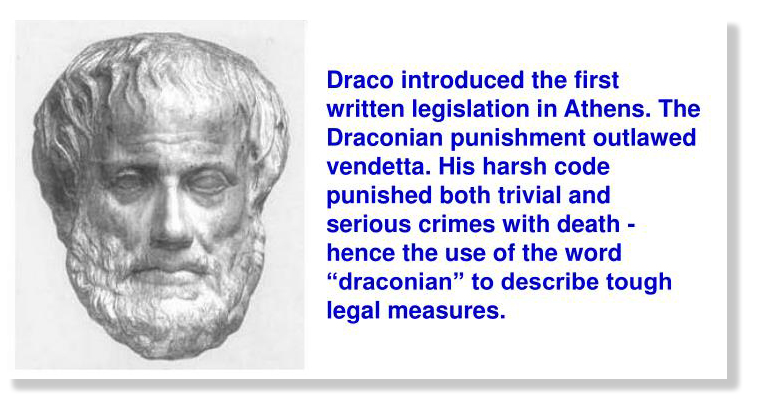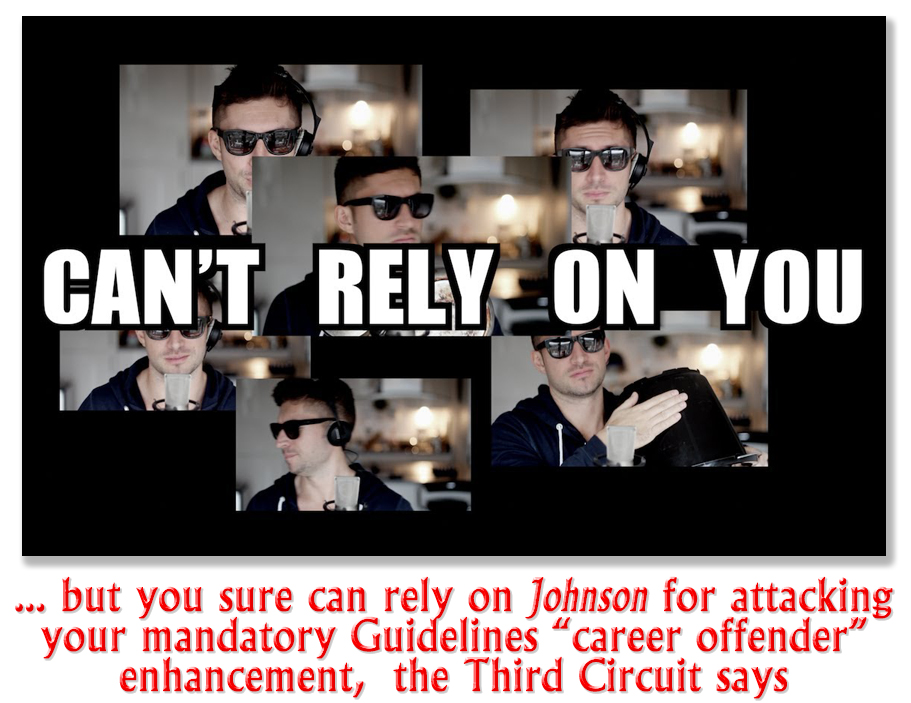We post news and comment on federal criminal justice issues, focused primarily on trial and post-conviction matters, legislative initiatives, and sentencing issues.
TWO OUTTA THREE AIN’T BAD…
 Under the Armed Career Criminal Act, a defendant convicted of possession of a firearm as a convicted felon would see his or her sentence increase from a 0-10 year range to a 15-year-to-life range if he or she had three prior convictions for crimes of violence or serious drug offenses. Any who could possibly object? It makes perfect sense that we would want to get these gun-wielding lifetime lowlives off the streets for a long time.
Under the Armed Career Criminal Act, a defendant convicted of possession of a firearm as a convicted felon would see his or her sentence increase from a 0-10 year range to a 15-year-to-life range if he or she had three prior convictions for crimes of violence or serious drug offenses. Any who could possibly object? It makes perfect sense that we would want to get these gun-wielding lifetime lowlives off the streets for a long time.
Likewise the Sentencing Guidelines, which jack up the sentencing ranges for what it calls “career offenders,” people getting convicted of drug or violent crime offenses with only two qualifying priors of much the same flavor as the ACCA predicates. Think of Guidelines “career offenders” as “ACCA Lite.” Nevertheless, who among us law-abiding citizens would not want to see these no-goodniks safely behind bars for a long time?
But things seldom work out in practice the way they sound in a Capitol Hill soundbite. The prosecutors ran with it, and so we had people getting the ACCA label for prior offenses of drunk driving or walking away from a halfway house. We personally know one guy who broke into a barbershop one night, and – while he was there – went to the door leading to the attached beauty shop. Hr got bupkis in the burglary, but 10 years later, the prosecutors counted it as two burglaries (which are categorically “crimes of violence”) not one. Another guy sold drugs for a week nine years before, and did a year of state time. But he pled guilty to three counts, selling a dime bag each day for three days in a row. The court called that three serious drug offenses, not one, and he got 15 years.
But the ACCA and “career offender” Guidelines have been mangled by defendants, too. A “crime of violence” has to be defined, and – as we have explained before – that’s not always easy. But surprisingly enough, it’s not always simple to figure out what a “serious drug offense,” is, either. The statute says it’s either (1) an offense under the federal Controlled Substances Act with a max sentence of 10 years or more; or (2) an offense under state law “involving manufacturing, distributing, or possessing with intent to manufacture or distribute, a controlled substance” with a max of 10 years or more. It looks straightforward, but it is not.
 After the Supreme Court’s 2016 Mathis decision, defendants are not just looking for crimes of violence that are too broad for the ACCA and Guidelines career offender enhancement. The statute defines a prior state offense as involving “manufacturing, distributing, or possessing with intent to manufacture or distribute.” But state statutes sometimes include “transporting” or “offering to sell” in their definitions, and those are broader than the ACCA/Guidelines definition. Thus, defendants seek to invalidate state drug convictions for being too broad.
After the Supreme Court’s 2016 Mathis decision, defendants are not just looking for crimes of violence that are too broad for the ACCA and Guidelines career offender enhancement. The statute defines a prior state offense as involving “manufacturing, distributing, or possessing with intent to manufacture or distribute.” But state statutes sometimes include “transporting” or “offering to sell” in their definitions, and those are broader than the ACCA/Guidelines definition. Thus, defendants seek to invalidate state drug convictions for being too broad.
Corey Jones tried that, arguing that his Illinois drug conviction did not count toward Guidelines career offender status, because it applied not just to controlled substances and counterfeit drugs, but to controlled substance analogs, too. He argued the CSA only applied to two of those – controlled substances and counterfeit drugs – making his prior under 720 Ill.Stat. 570/401 too broad. Two outta three, he argued, was bad.
Last week, the 8th Circuit turned him down, holding that two outta three ain’t bad. While 21 USC 841 (the defining offense statute in the CSA) does not mention analogs, Title 21 USC 802(32)(a) defines analog (albeit spelled “analogue”) and Sec. 813 provides “that a controlled substance analogue shall, to the extent intended for human consumption, be treated, for the purposes of any Federal law as a controlled substance in schedule I… Differences in spelling notwithstanding, we find no material distinction between the term “analog” as used in 720 Ill.Stat. 570/401 and the federal term “analogue” as used in Sec. 813. We therefore conclude Jones’s two prior Illinois convictions categorically qualify” for career offender status.
United States v. Jones, Case No. 17-1710 (8th Cir. Feb. 21, 2018)
– Thomas L. Root













